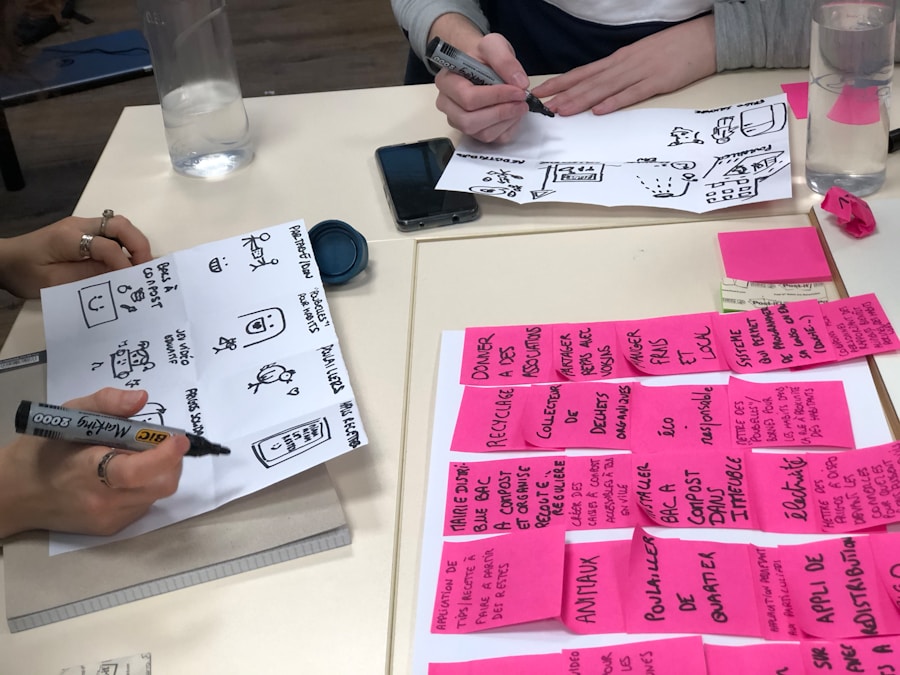Player psychology is a multifaceted field that delves into the motivations, emotions, and cognitive processes that drive individuals to engage with games. At its core, understanding player psychology involves recognizing the diverse reasons why people play games, which can range from seeking entertainment and social interaction to pursuing mastery and achievement. For instance, some players are drawn to the competitive aspects of gaming, thriving on the adrenaline rush that comes from competing against others.
Others may find solace in the immersive worlds that games create, using them as an escape from reality or a means to explore narratives that resonate with their personal experiences. Moreover, player psychology is influenced by various factors, including demographics, personality traits, and prior gaming experiences. Research has shown that younger players often exhibit a preference for fast-paced action and immediate rewards, while older players may gravitate towards more strategic and narrative-driven experiences.
Understanding these nuances allows game designers to tailor their creations to meet the expectations and desires of their target audience. For example, a game aimed at casual players might incorporate simpler mechanics and shorter play sessions, while a title designed for hardcore gamers could feature complex systems and deep lore that reward investment over time.
Key Takeaways
- Understanding player psychology is crucial for creating engaging and immersive game experiences.
- Creating challenges that are both stimulating and achievable is essential for keeping players engaged.
- Balancing difficulty and accessibility is important to cater to a wide range of players and keep them motivated.
- Fostering player agency allows players to feel in control and invested in the game world.
- Designing meaningful choices gives players a sense of impact and investment in the game’s narrative.
Creating Engaging Challenges
Engaging challenges are the backbone of any successful game, providing players with obstacles that stimulate their problem-solving skills and encourage them to think critically. The design of these challenges must be carefully considered to ensure they are not only difficult but also enjoyable. A well-crafted challenge strikes a balance between frustration and satisfaction; it should push players to their limits while still allowing them to feel a sense of accomplishment upon overcoming it.
For instance, puzzle games like „Portal“ exemplify this principle by presenting players with intricate puzzles that require creative thinking and experimentation, rewarding them with a sense of triumph when they finally solve them. In addition to traditional challenges, incorporating varied types of obstacles can enhance player engagement. This could include time-based challenges that create urgency, resource management tasks that require strategic planning, or even social challenges that encourage collaboration among players.
By diversifying the types of challenges presented, designers can cater to different player preferences and keep the gameplay experience fresh and exciting. For example, in multiplayer games like „Overwatch,“ players face not only individual skill challenges but also team-based objectives that require coordination and communication, fostering a dynamic environment where players must adapt to both their own abilities and those of their teammates.
Balancing Difficulty and Accessibility

Striking the right balance between difficulty and accessibility is crucial in game design, as it determines how inclusive a game can be for various player skill levels. A game that is too easy may fail to engage experienced players, while one that is excessively difficult can alienate newcomers. To achieve this balance, designers often implement adaptive difficulty systems that adjust the game’s challenge based on the player’s performance.
For instance, in „Dark Souls,“ while the game is notorious for its high difficulty level, it also provides players with opportunities to learn from their mistakes through trial and error, allowing them to gradually improve their skills. Accessibility features also play a significant role in ensuring that games can be enjoyed by a wider audience. This includes options such as customizable controls, adjustable difficulty settings, and visual or auditory aids for players with disabilities.
Games like „Celeste“ have garnered praise for their thoughtful approach to accessibility, offering assistive options that allow players to tailor their experience without compromising the core gameplay. By prioritizing both challenge and accessibility, designers can create games that are not only rewarding for seasoned players but also welcoming for those who may be new to gaming.
Fostering Player Agency
| Metrics | Value |
|---|---|
| Player Engagement | 75% |
| Player Retention | 80% |
| Player Satisfaction | 90% |
| Player Empowerment | 85% |
Player agency refers to the degree of control and influence players have over their actions and decisions within a game. Fostering a sense of agency is essential for creating an engaging experience, as it empowers players to shape their own narratives and outcomes. This can be achieved through open-world designs that allow for exploration and experimentation or through branching storylines where choices lead to different consequences.
For example, in games like „The Witcher 3: Wild Hunt,“ players are faced with moral dilemmas that impact the game’s world and characters, making each decision feel significant and personal. Moreover, player agency can be enhanced by providing multiple pathways to success within a game. This could involve offering various character builds or playstyles that cater to different preferences, allowing players to approach challenges in ways that resonate with them.
In „Skyrim,“ for instance, players can choose to specialize in combat, magic, or stealth, creating a unique experience based on their chosen playstyle. By giving players the freedom to make meaningful choices and explore different strategies, designers can cultivate a deeper connection between players and the game world.
Designing Meaningful Choices
The design of meaningful choices is integral to creating an engaging narrative experience in games. Choices should not only affect gameplay mechanics but also resonate emotionally with players, influencing their connection to characters and storylines. This requires careful consideration of how choices are presented and the potential consequences they entail.
In narrative-driven games like „Life is Strange,“ players are faced with decisions that impact relationships and story outcomes, prompting them to reflect on their values and priorities. Additionally, meaningful choices should be framed within the context of the game’s themes and messages. When players feel that their decisions align with the overarching narrative or moral dilemmas presented in the game, it enhances their investment in the story.
For example, in „Mass Effect,“ players must navigate complex political landscapes and personal relationships, with choices that not only affect immediate outcomes but also shape the broader universe across multiple installments. By designing choices that carry weight and significance, developers can create a more immersive experience that resonates with players long after they have finished the game.
Utilizing Feedback Loops

Enhancing Player Engagement
Effective feedback loops can significantly enhance player engagement by reinforcing positive behaviors and encouraging players to improve. For example, in rhythm games like „Beat Saber,“ immediate feedback on timing and accuracy encourages players to refine their skills, and provides a sense of accomplishment with each successful note hit.
Creating a Sense of Progression
Feedback loops can also be used to create a sense of progression within a game. By rewarding players for completing challenges or achieving milestones with tangible benefits, such as new abilities, items, or story revelations, designers can motivate continued engagement.
Fostering a Desire to Return
In role-playing games (RPGs) like „Final Fantasy XIV,“ leveling up characters through experience points creates a feedback loop where players are incentivized to explore new content and tackle increasingly difficult challenges. This sense of progression not only keeps players invested but also fosters a desire to return to the game regularly.
Implementing Dynamic Systems
Dynamic systems in game design refer to interconnected mechanics that respond to player actions and evolve over time. These systems create a living environment where player choices have tangible effects on gameplay and narrative outcomes. For example, in simulation games like „The Sims,“ player decisions regarding character relationships and life choices influence the dynamics of the virtual world, leading to unique experiences for each player based on their interactions.
Implementing dynamic systems requires careful planning and balancing to ensure that player agency is respected while maintaining coherence within the game’s world. Designers must consider how various systems interact with one another—such as economy, social relationships, or environmental factors—to create a cohesive experience. In strategy games like „Civilization,“ for instance, player decisions regarding diplomacy, warfare, and resource management can lead to vastly different outcomes based on how these systems interrelate.
By creating dynamic systems that respond meaningfully to player actions, designers can foster a rich gameplay experience that encourages exploration and experimentation.
Crafting Immersive Environments
The creation of immersive environments is paramount in drawing players into the game world and enhancing their overall experience. An immersive environment is characterized by attention to detail in visuals, sound design, and narrative elements that work together to create a believable world. For instance, in open-world games like „Red Dead Redemption 2,“ the meticulously crafted landscapes—complete with dynamic weather systems and realistic wildlife—contribute significantly to the player’s sense of immersion.
Sound design plays an equally important role in crafting immersive environments. Ambient sounds, character dialogue, and musical scores all contribute to the emotional tone of a game. In horror games like „Resident Evil,“ unsettling soundscapes heighten tension and create an atmosphere of dread that keeps players on edge.
Additionally, integrating narrative elements into the environment—such as environmental storytelling through visual cues or hidden lore—can further enhance immersion by encouraging exploration and discovery. By focusing on these aspects of environment design—visual fidelity, soundscapes, and narrative integration—developers can create worlds that feel alive and engaging. This level of immersion not only captivates players but also fosters emotional connections with characters and stories within the game world.

